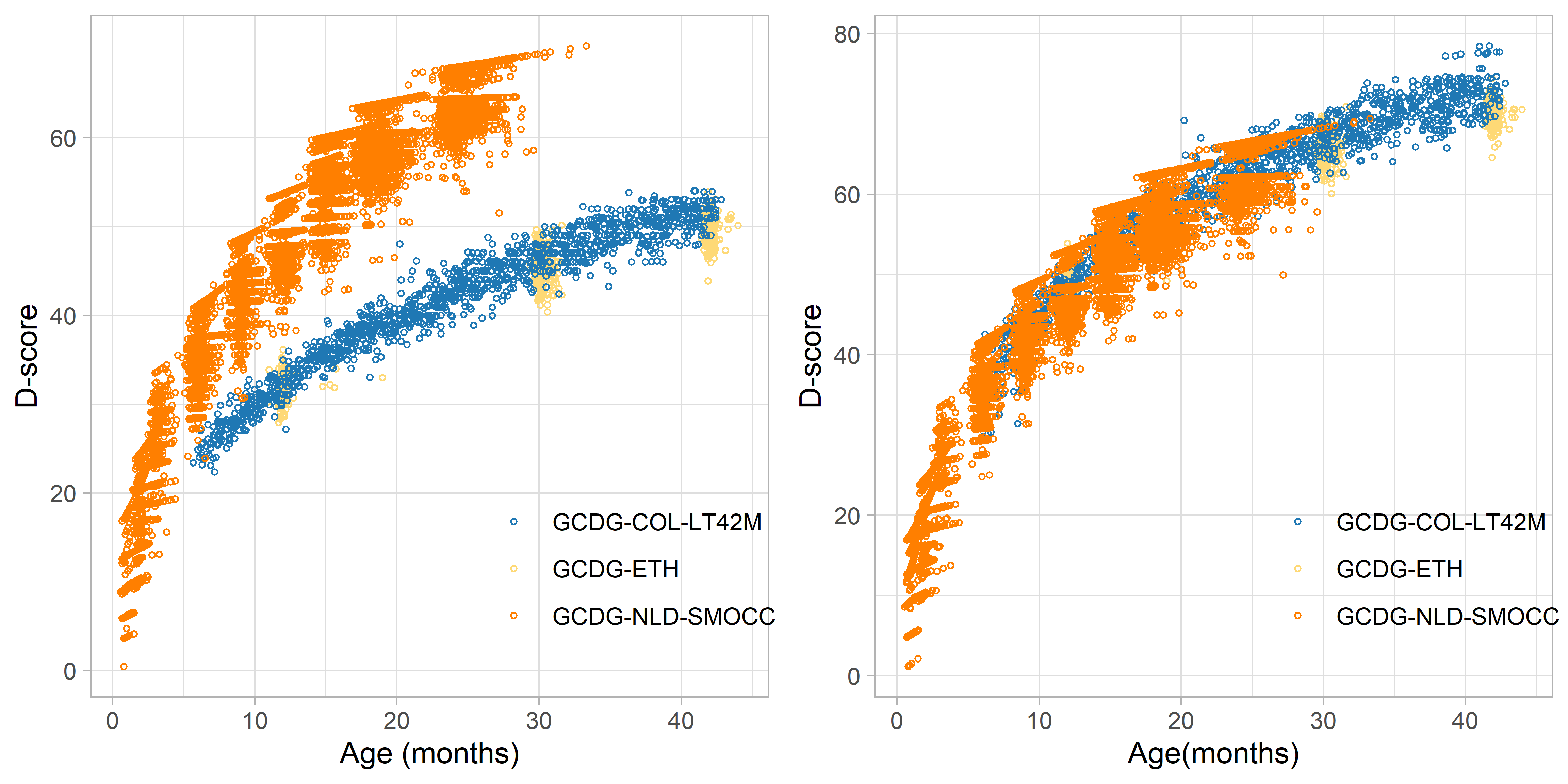4.5 Common latent scale
The end goal for using the equate group method to model development items is to measure development on one common latent scale, the D-score. That way, the measure (i.e. D-score) can be obtained, irrespective of which instrument is used in which population.

Figure 4.3: Example of three cohorts with and without equate group linking.
Figure 4.3 displays the D-score estimates by age in three cohorts from the GCDG study: Netherlands 1 (GCDG-NLS-SMOCC), Ethiopia (GCDG-ETH) and Colombia 2 (GCDG-COL-LT42M) for two different analyses. As described in section 2.2, the Netherlands 1 study administered the ddi; Ethiopia measured children by the by3; and Colombia collected data on by3, den, aqi and bdi. Accordingly, there is an overlap in items between Ethiopia and Colombia via the by3, but the Netherlands 1 cohort is not linked.
We created the plot on the left-handed side without active equate groups. The large overlap between Ethiopian and Columbian children occurs because the scales for these studies are linked naturally via shared items from by3. Since the ddi instrument is not connected, the Dutch cohort follows a different track. While we can compare D-scores between Ethiopia and Colombia, it is nonsensical to compare Dutch to either Ethiopia or Colombia. The right-handed side plot is based on an analysis that used active equate groups to link the cohorts. Since the analysis connected the scales for all three cohorts, we can now compare D-scores obtained between all three cohorts.
This example demonstrates that active equate groups form the key for converting ability estimates for children from different cohorts using different instruments onto the same scale.